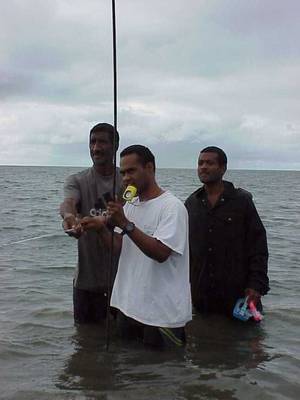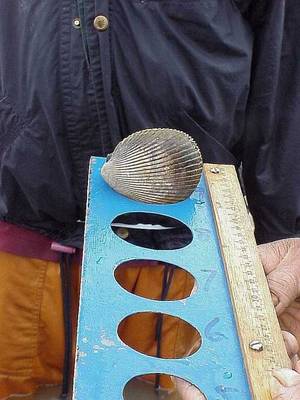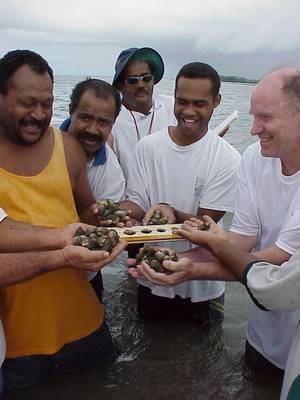Human impacts on Coastal Fisheries in rural communities and their Conservation Approach: A case study on Kaikoso (Anadara spp) Fishery in Verata District, Fiji
The results of this case study have demonstrated that human impacts on coastal fisheries, however small they may be perceived, significantly contribute to the decline in both the quality and the quantity of fishery resources in rural communities, even in rich fishing grounds and where urban-based sources of pollutant are absent. This integrated case study examined the nutrition and the economic value of the kaikoso fishery in Verata as well as the public health concerns in relation to the consumption of coastal resources, and the biological, ecological and socio-economic factors that effect coastal fisheries. It also tested and evaluated the conservation concepts and the innovative management and monitoring approaches implemented by the studied communities for the sustainable management of their coastal fishery.
The study revealed that the kaikoso fishery provides a consistent source of protein and iron averaging 2365kg/household/year and 56kg/household/year respectively. It also contributes a significant 37% of total income earned (average of $122/fortnight) by each household, which is collectively valued at approximately $24,296/annum for Kumi and Ucunivanua villages. It was established that the kaikoso fishery can be considered as the sustainability indicator for coastal fisheries in Verata given the high reliance of Verata communities on it for both subsistence and commercial purposes and its high vulnerability to over-harvesting and pollution.
The catch survey for kaikoso analyzed in this study was compared to previous studies done by Passfield (1997) and Vunisea (1996) and showed a predominant trend of increasing kaikoso catches throughout the observed five year period since 1995. The estimated standing crop of kaikoso at the surveyed harvested sites alone in Kumi and Ucunivanua villages based on the 1999 monitoring data is more than 11 x 105 individuals. The harvested quantity is also estimated at around 7 x 105 individuals per year from the two villages.
This study confirmed that the establishment of tabu or traditional no-take areas as refuge and replenishment zones for fishery resources not only increases fisheries stock within demarcated tabu areas but also in adjacent harvested areas. The effect of the physical destruction of fishers’ harvesting activity on the ecosystem and other non-targeted benthic communities was revealing. Findings from transect surveys showed that tabu areas both provide refuge for targeted species and an opportunity for ecosystems and habitats to rehabilitate. They also enhanced ecological and some environmental conditions that are necessary for the resource’s food, nourishment (juvenile and adult), reproduction and growth.
There were significant differences in kaikoso density within each size class throughout the three surveys (0, 11 and 29 months) between the tabu and harvest sites. The seeding effect of the declared tabu areas is contributing to the significant increase in kaikoso density and the high recruitment rate observed in harvested areas. The recruited population throughout the successive tabu period is shifting the population structure towards the medium (3.5-5.5cm) and large (>5.5cm) size classes.
Involving communities in monitoring can lead to conservation success in many unanticipated ways. The community’s participation in monitoring and resource management regenerates pride in traditional management practices such as the declaration of tabu areas, especially during biological monitoring when they see how their concepts of conservation compliment scientific principles. There were no significant differences between the community and the researcher’s monitoring data; hence community can do “good science”.




